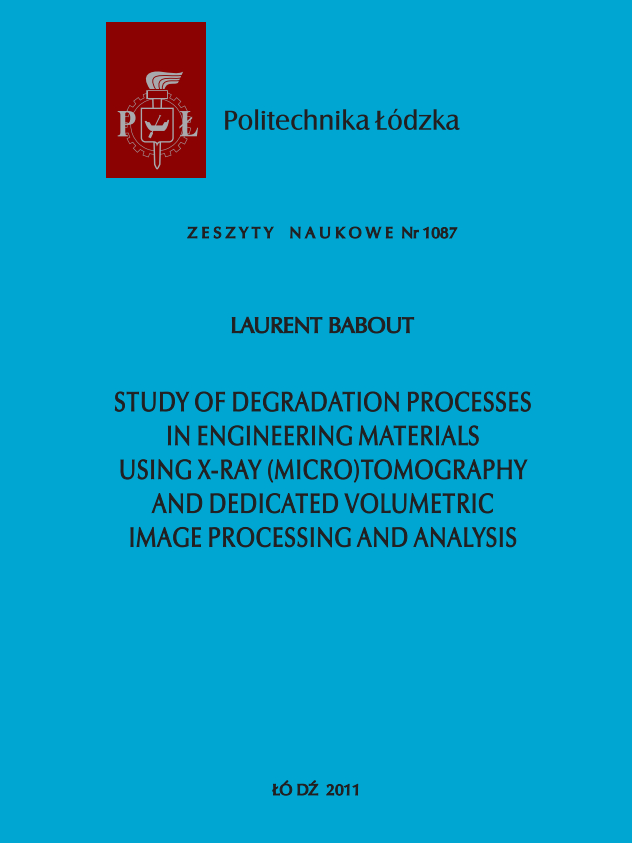
Study of degradation processes in engineering materials using X-ray (micro)tomography and dedicated volumetric image processing and analysis
Laurent Babout
Zeszyty Naukowe, Nr 1087
Rozprawy Naukowe, Z. 403
ISSN 0137-4834
Rok wydania: 2011
Pobierz plik PDF
This dissertation presents new experimental and computing methodologies to study different degradation processes in engineering materials. This has been done thanks to the unique use of X-ray tomography and the development of new image processing and analysis strategies.
The work consists of four chapters. The first one introduces some of the most frequent degradation processes encountered in engineering materials. It also presents how X-ray tomography has become a competitive and unique tool to study non destructively and in three dimensions these phenomena in the past10 years. This fact is illustrated in more detail by one example corresponding to the quantification of damage initiation and propagation in a model composite material. This material has been especially fabricated to satisfy the main requirements from X-ray tomography. This example is also used to stress the fact that, despite the uniqueness of the 3D information that is obtained from X-ray tomography, a large proportion of studies remain qualitative because of complicated microstructures or low contrasted images to be studied. This introduces the main message of this manuscript: there is a need to develop image processing strategies so as to extract quantitative information from 3D images.
In this context, the next three chapters are devoted to different challenging studies, both from the materials science and computer science points of view. in the order of presentation, they deal with thermal oxidation in graphite for nuclear applications, intergranular stress corrosion cracking in austenitic stainless steel and propagation of fatigue crack in (a+b) titanium alloys with lamellar microstructure. The author contributed to each of those research areas, both at the experimental and computing level. in each chapter, the results obtained from X-ray tomography are highlighted, with a particular focus on microstructural features that influence the degradation process. Then, the study is put into a computer science context and the novel image processing or image analysis algorithm that has been developed is presented. The last step concerns,when applicable, the study of the results from a materials science point of view, based on the quantitative data obtained thanks to image processing.
This work is interdisciplinary. a great deal of effort has therefore been put in the writing of this manuscript to make it readily comprehensible for both materials and computer scientists who are willing to get more information about the other field of science.

